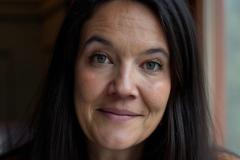Gillan Doty
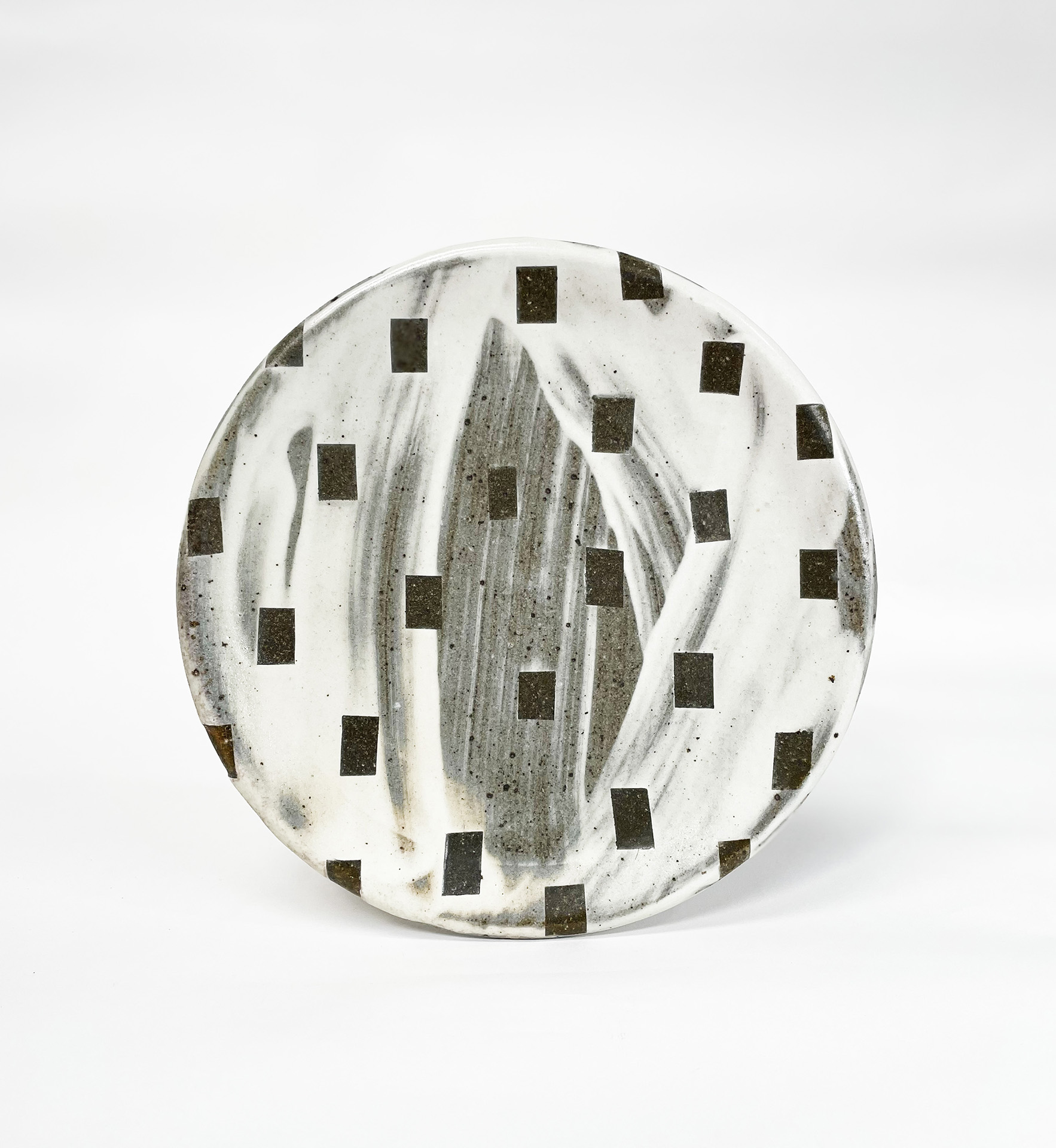 In mid-November, I spoke with Gillian Doty for almost two hours in what proved to be an emotionally raw and deeply reflective conversation. The impact of surviving and navigating the turmoil of the recent disaster was still fresh in Gillian’s mind, and as we spoke, those experiences rose vividly to the surface. From personal struggles to the broader challenges faced by the community, our discussion captured the resilience, heartache, and determination that emerged in the wake of such devastation. Gillian’s words offered an honest glimpse into the complexities of community in times of crisis. Our conversation has been streamlined for readability.
In mid-November, I spoke with Gillian Doty for almost two hours in what proved to be an emotionally raw and deeply reflective conversation. The impact of surviving and navigating the turmoil of the recent disaster was still fresh in Gillian’s mind, and as we spoke, those experiences rose vividly to the surface. From personal struggles to the broader challenges faced by the community, our discussion captured the resilience, heartache, and determination that emerged in the wake of such devastation. Gillian’s words offered an honest glimpse into the complexities of community in times of crisis. Our conversation has been streamlined for readability.
Gillan Doty (GD): I originally grew up in the Northeast, and we had snowstorms – the power might go out for a little bit because a tree limb fell on the power lines. But it was a rude awakening dealing with this whole hurricane and flood. It's certainly nothing I've ever seen or experienced, and it puts a lot in perspective. Of course, we see images and news about natural disasters all over the world, but even I found being in Asheville, or just western North Carolina in general, if you see an image or a photograph of a disaster, it seems terrible, however, when you look at it in person, and it's the exact same thing, but the reality and directness are far more profound. It's just completely different.
Randi O’Brien (ROB): People don't understand the hustle and haste you must make in those kinds of natural disasters. You see it in photos or on the news and are glad everybody's safe. But people don't realize the feeling of these in-the-moment decisions you must make; in many ways, life and death. There's no way to describe the sensation of survival and what it is to see the true power of our environment. It’s a stark, sobering reality.
GD: I just spoke to Michael on the phone today, and he told me that for the first three days after the storm, he had no idea whether or not his kids were alive. Everyone has their own unique, personal experience, but it was a shocking seventy-two-hour period for everyone in that region.
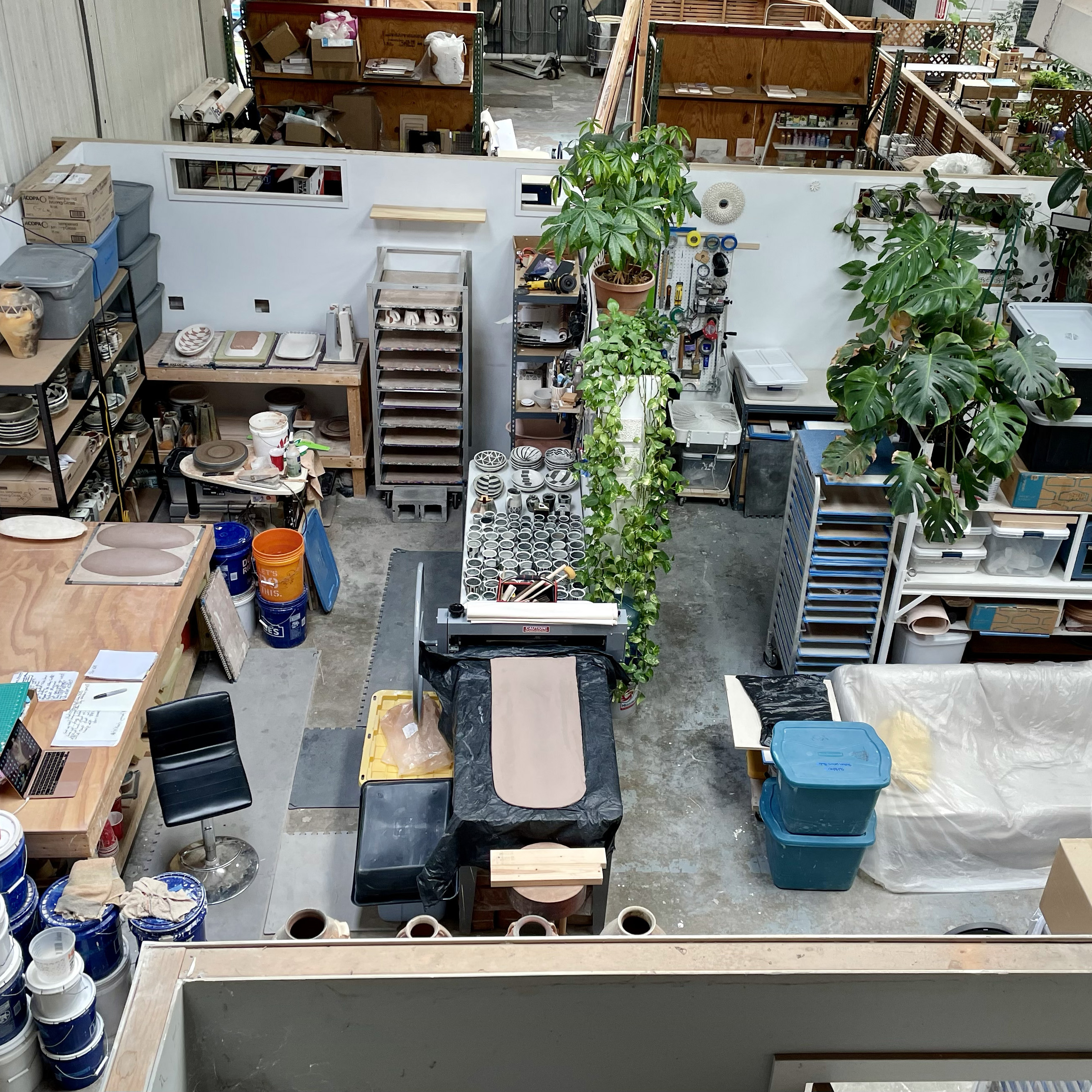
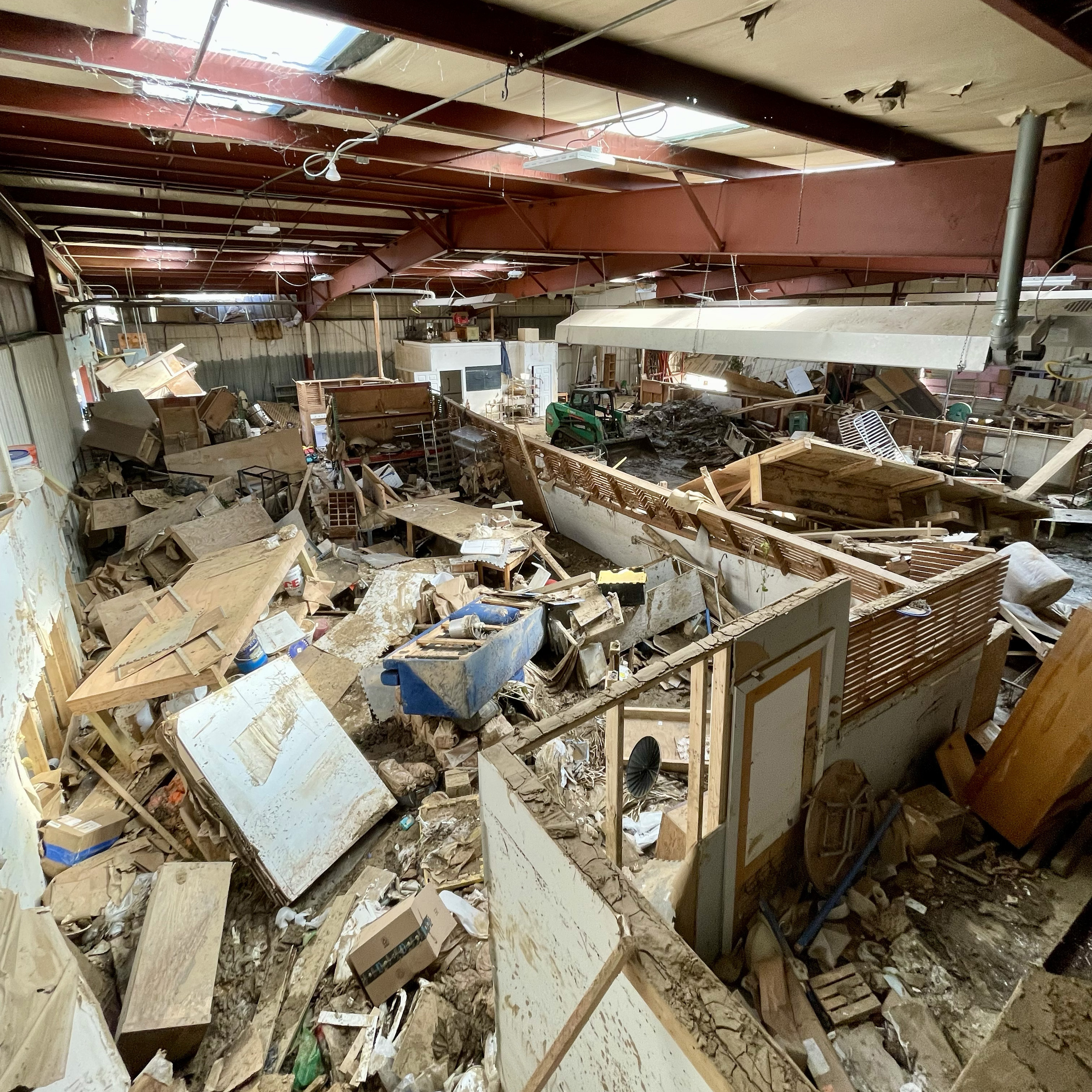
ROB: Before diving into the day of and the days following the disaster, let's help readers with some backstory. You mentioned you're originally from somewhere other than North Carolina. Where are you initially from?
GD: I was born in the Midwest but grew up in Southern New Hampshire and upstate New York. I went to Main College of Art as an undergrad, and that was a great clay experience. Then, I moved to Minneapolis to work at the Northern Clay Center for a year. I loved Minneapolis, but I was just in that zone of residency hoping. I applied to more residencies, and I got this gig down here at Odyssey ClayWorks. On a whim, I moved down to Asheville.
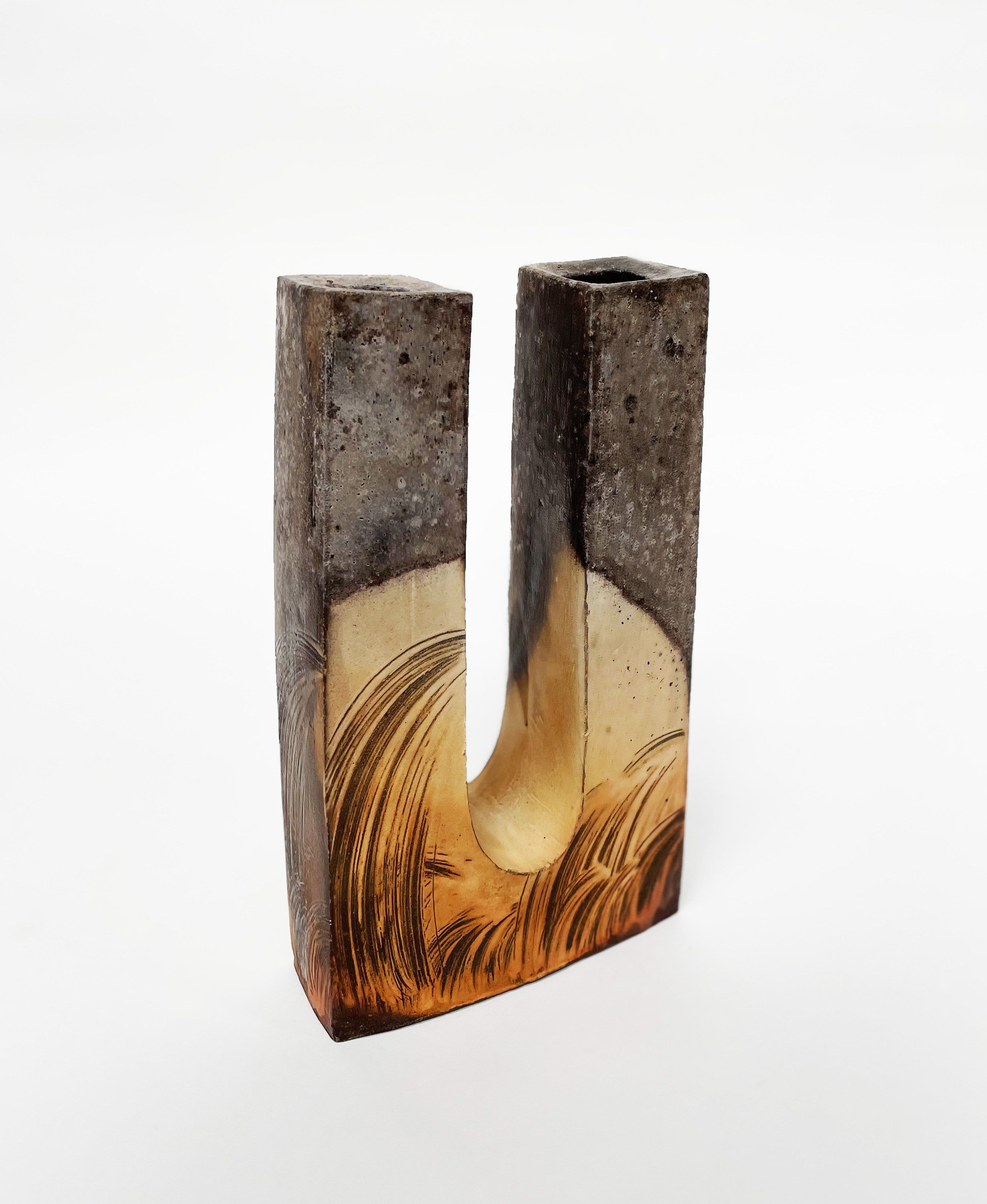 In the same way that was on a whim, my moves to both the Midwest and the Southeast were very strategic in that I knew they were, at least in my mind at the time, the two big pottery hubs. I was fortunate to have great instructors and teachers in high school who turned me on to the great ceramic masters, sculptors like Beth Cavener, and wood-firing. When I went to college, I got interested in studio pottery.
In the same way that was on a whim, my moves to both the Midwest and the Southeast were very strategic in that I knew they were, at least in my mind at the time, the two big pottery hubs. I was fortunate to have great instructors and teachers in high school who turned me on to the great ceramic masters, sculptors like Beth Cavener, and wood-firing. When I went to college, I got interested in studio pottery.
ROB: When did you move to North Carolina?
GD: I moved here in 2017. I still feel very much like a newcomer. Most of the people I spend time with arrived in the late 90s and early aughts. They showed up when it was still punk rock, but the area has exploded, especially since the pandemic.
I was a resident artist for three and a half years at Odyssey ClayWorks. I love the folks over there, and I still teach there.
ROB: After Odyssey, did you end up purchasing a home and studio space in the area, or did you find another community space to work in?
GD: It's an awesome arts community here, but at the same time, there are so many artists in a small, concentrated area; finding studio space in Asheville proper is limited but also really pretty expensive. After my residency, I was put in touch with a great potter, who is now a good friend of mine, Melissa Weiss, who has a large or had a large warehouse building. What I was able to do with a friend of mine was rent a big section of the building Melissa had access to. It was just this old warehouse. I was roughly there for four years.
Melissa had a space that was designated as hers. There was an area in the front of the building where they installed several outlets that could house an electric kiln. And then there were just sort of private spaces throughout the building.
This building is right off the Swannanoa River. There are basically two larger rivers that go through Asheville, and right next to the river arts – the area that was severely affected by the flood. It floods in Asheville pretty often. The River Arts District is built on a flood plain; it’s a classic story of artists building there because the land and the buildings were cheap.
Even when the River Arts District floods – the Swannanoa River is a bit smaller, and our building was set back a bit from the river, and we were also up about the height of a loading dock, so roughly, four or five feet off the ground – there was never significant damage. The area would flood all the time, and the water would come up to the loading dock or a few feet above the bank, but everything would be totally safe.
I've talked to so many people since the storm, and I think one of the problems was that we were under the impression that this was going to be just another flood; it's gonna be fine. We were all monitoring the floodplain charts that you can find on the government website. Initially, when you looked at the chart, you would say, “If I'm under this threshold, I'm gonna be dry.” But I think everything escalated really fast. In that, twelve hours before the storm hit, our flow chart for where our studio was on the Swannanoa River jumped up by eight feet of water. So we went from being completely safe to, if the chart is correct, then our building will be totally underwater. All systems go! Get down to the studio right now and try to take out as much as you can.
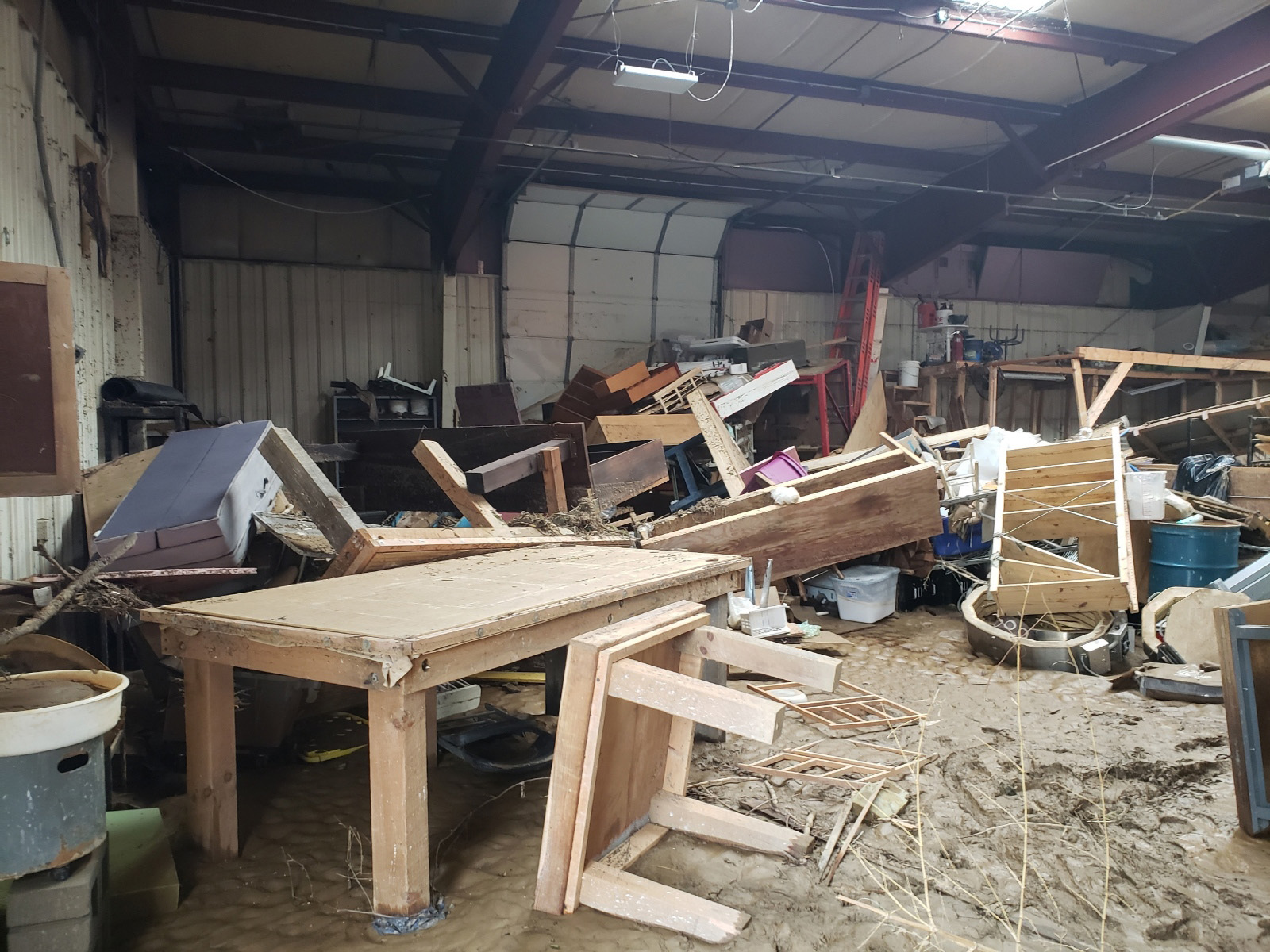
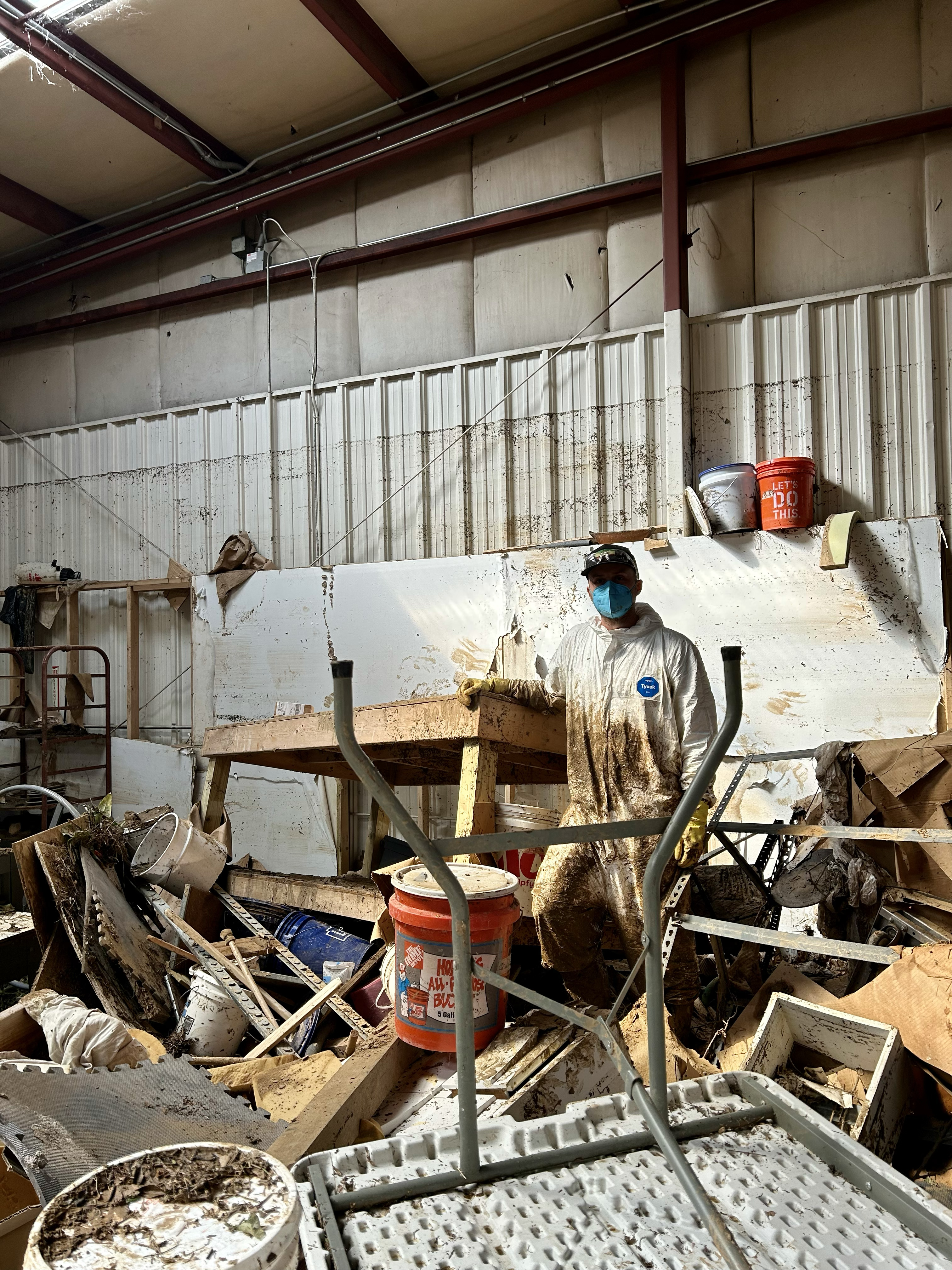
ROB: Can you describe those moments? I mean, obviously, you knew the hurricane was coming, but then the subsequent flood – can you talk about the impact of that and what that day was like? Walk me through your experience.
GD: I live in North Asheville and up on a hill, so I'm in no danger of any sort of flooding. In the days leading up to the storm, we had a lot of flash flooding, and that's common. We'll just get dumped on for two hours, and all of a sudden, there's a foot of water everywhere. So, I was helping several folks I know in The River Arts District move some of their things out. At the time, again, I was still sort of thinking that maybe some people were going to have a foot of water on the first floor of the building, but really, it’s going to be okay.
To be completely honest, before the storm actually hit, I was sort of in disbelief at the idea of it being that severe. Since I've lived here, there have been people who have talked about these biblical floods that are going to come where everything is destroyed, and then, in reality, the river barely rises up. Essentially, we were being extra cautious in the studio, and we put a lot of things like electric kilns up on tables.
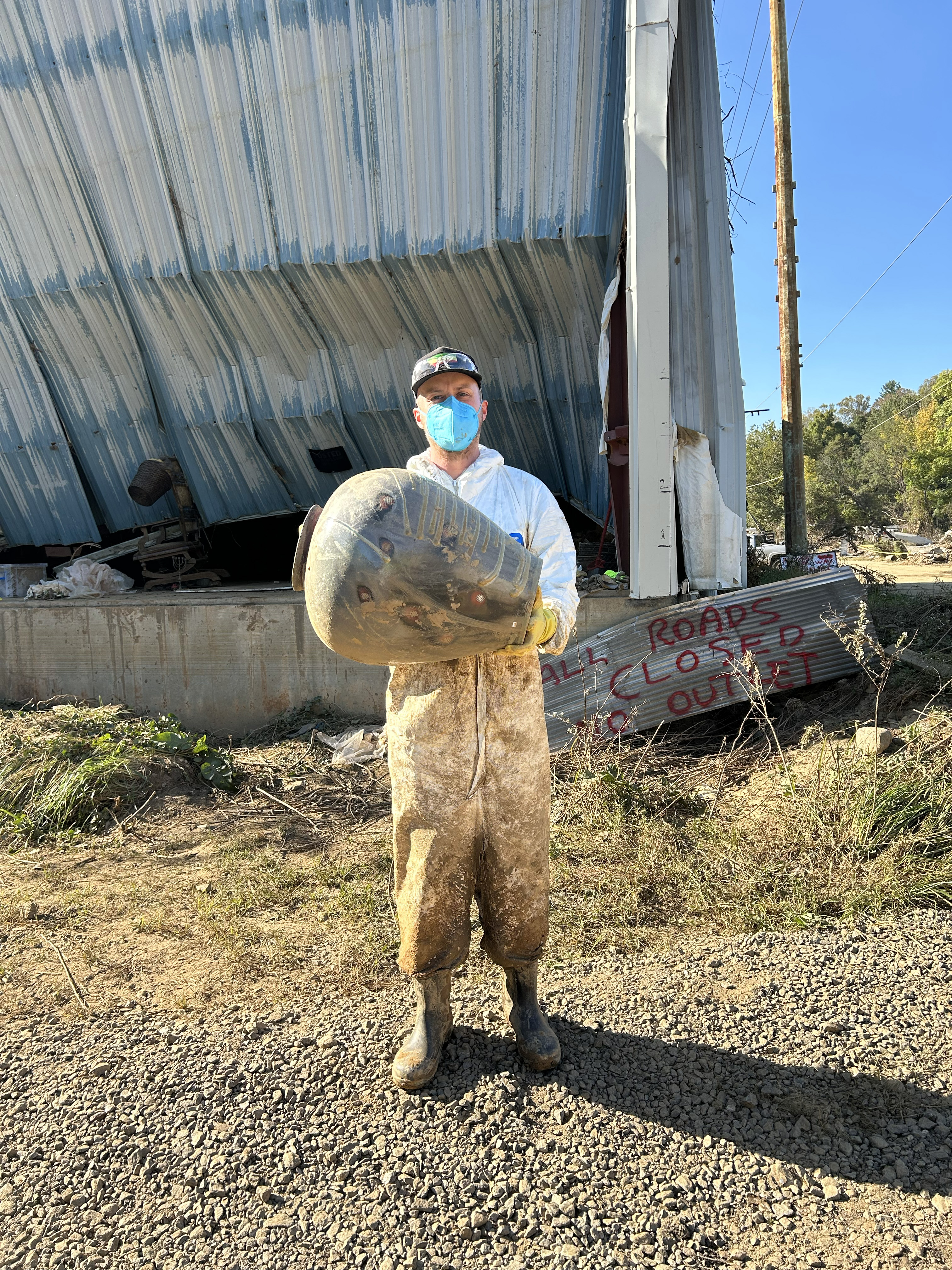 Then the parking lot started flooding at the building I was helping out at because the river came over the sort of Levy. All of a sudden, this panic sets in. "Oh my gosh! We all have to leave right now!" Luckily, the folks I was with were all able to drive out.
Then the parking lot started flooding at the building I was helping out at because the river came over the sort of Levy. All of a sudden, this panic sets in. "Oh my gosh! We all have to leave right now!" Luckily, the folks I was with were all able to drive out.
I got home, and I was just ready to hunker down for a day or two, assuming it would probably be kind of stormy – you know, watch some movies, get some email done. Then I remember being at the house, and my girlfriend was at work, and I was sort of waiting for her to get home because most places were closing early. I remember I got a text from our studio group chat that linked to the updated floodplain. That's when we all realized it had just gone from safe to completely unsafe. And so the flood predicted, the chart indicated that we would have twenty feet of water off the Swannanoa, which would have been catastrophic. What we ended up having was twenty-seven feet. So the chart was actually seven feet off.
The initial panic was we needed to just jump in our Subaru Outback right now, drive to the studio, and just pull out whatever we could. My girlfriend is also a potter and worked in the building. She had just bought a brand new Skutt electric kiln, and we had set it up that week. So, it hadn't even been fired yet. She was awarded a grant to purchase it, and it was a big victory. So immediately, what we did was go into the building and put the kiln into the car. Then we put an electric wheel into the car and my lighting fixtures for craft shows. At this point, we are all hoping that we're just over-preparing and this will all be wrong.
In the building, we also had these loft areas in the studio, so I spent the better part of a few hours just moving everything I possibly could up to this loft area. Ultimately, someone who was tracking the flood water in the building was like, “Alright, everyone needs to do what they feel they need to do.” I think it was maybe three o'clock in the afternoon at that point, and the call was made that no one could be here at four o'clock because the roads were going to be closed – you wouldn't be able to leave if you stayed here. So we wrapped up and left the studio with our Subaru packed full of stuff.
Then the storm hit in full force the following morning, really early. We were at our home, looking out the front window, just watching trees fall onto our neighbor's cars. Gusts of wind that I've never experienced. The wind was so loud and shook the space that you were in.
Immediately, we lost electricity and Wi-Fi, but also cell phone service. It was probably two in the morning on Thursday. We couldn't check any weather, any flood charts, or anything. We were in disbelief.
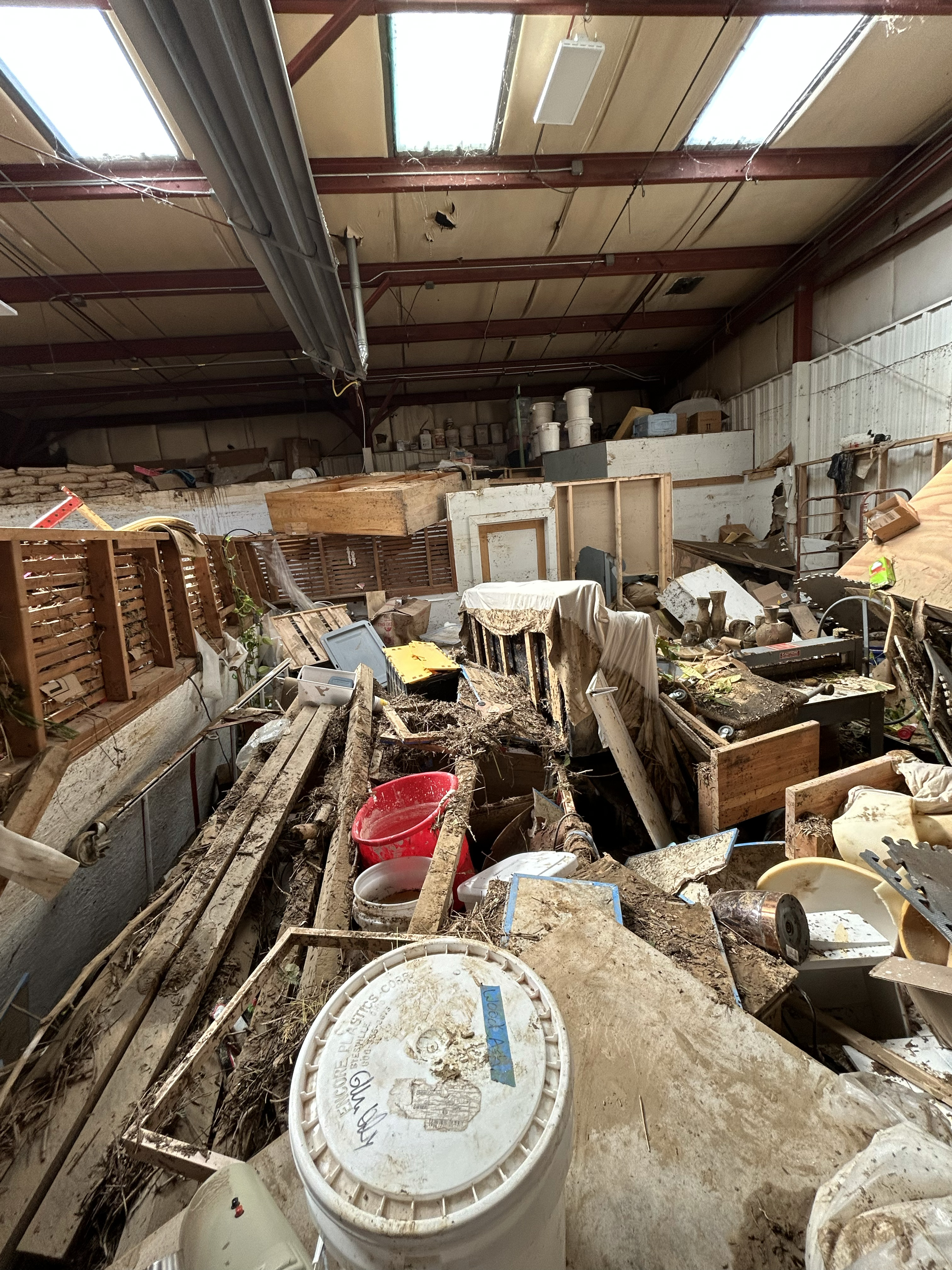 We were trapped at our house because trees fell in both directions on the road we live on, so we couldn't leave for a few days. The destruction was incredible, just in our neighborhood. We were walking around after the storm finished, and almost every fifty feet was a one-hundred-year-old oak tree across the road. So, you're quickly realizing, okay, we're not going to be able to get out of here very soon.
We were trapped at our house because trees fell in both directions on the road we live on, so we couldn't leave for a few days. The destruction was incredible, just in our neighborhood. We were walking around after the storm finished, and almost every fifty feet was a one-hundred-year-old oak tree across the road. So, you're quickly realizing, okay, we're not going to be able to get out of here very soon.
We also realized that we were utterly unprepared. We had no food; we barely had any water. The water shut off immediately. The city turned it off because they were worried about pipes bursting. The reality started to dawn on us: this is actually survival mode. I don't think I was thinking about the studio because we just need to get water. So, the day after the storm, I went to a grocery store because we heard from a neighbor that the line was shorter, but they didn't have any water. Then, my girlfriend walked to a different grocery store a few miles down the road because they heard they had water, and she waited in line to get water for five hours.
We secured water, we had food, and then, we couldn't get in touch with anybody. So randomly, a friend of ours just knocked on our window, calling out, “Hey, are you in there?” It's a friend of ours who is actually from Florida, so they've lived through several hurricanes, and they explained, “Oh, I'm just going around checking on people.” He had a big pickup truck, so he was able to drive through the difficult areas and took us to where he had heard there was cell reception.
Once we got out of our little neighborhood, everything was apocalypse. There's no gasoline anywhere; people are kind of losing their minds a little bit.
We cut through the River Arts District because I wanted to see what the river did. It was finally an opportunity to look over the whole river arts as we crossed over the primary bridge. We look out, and the entire River Arts District is destroyed. To see it with your own eyes – and of course, I didn't see pictures, I hadn't heard anything from anybody – and so you just look out. It's not only where we worked, but it's where we hung out. It's all of our favorite restaurants, our favorite bars, where our friends lived – that was our neighborhood.
There's nothing there. It's not a question of whether this may be salvageable. There's nothing there anymore. That was a really hard day.
ROB: I am so sorry.
That's probably the first time you're mentally checking back in with the art side of your life because you were in survival mode for those three days.
GD: We continued on to get to cell service. We kind of got lucky in that we were going to check on another friend of ours, and you walked around in circles in their front yard, you could pick up a little bit of service. As soon as I got into their front yard, my phone exploded with notifications.
I immediately called family, but I was it was short lived because the service would cut out. “Hey, I don't have any service. My phone's going to cut out. Everything's destroyed. I'll talk to you soon. We are safe.”So, that was also really hard because it's eight of those phone calls in a row, and you can barely talk because you're just so choked up.
The following day, we heard that there was Wi-Fi at the public library. So, we walked down to the public library, and there were about 150 people sitting on the sidewalk in front of the library that was closed using Wi-Fi.
Everyone is in different states of distress.
And so I'm trying to answer emails and call people and get in touch. But then also, that was the first time that I got a message from Melissa. Right after the storm, she went down to the studio, and captured a video of the studio completely destroyed. Basically, I'm witnessing my livelihood, my life destroyed, surrounded by 150 strangers.
It would be another week and a half before we could even go into the building. The area was closed because the building neighbors near us were gas companies. So, down where our studio was, was a gas fire; gas tanks that were leaking were spraying off gas that caught on fire. It was declared a hazardous waste zone and completely blocked off by the National Guard.
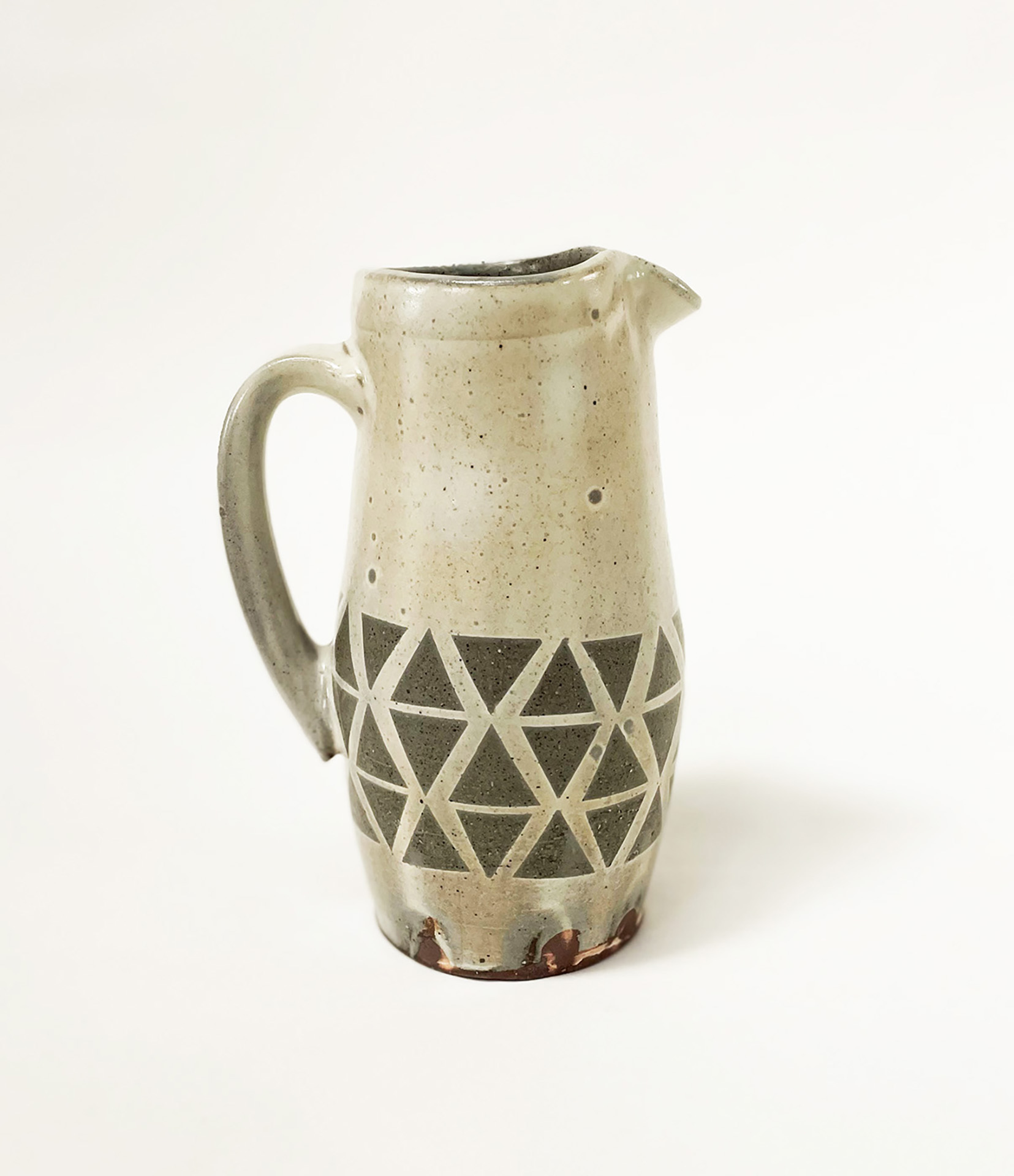
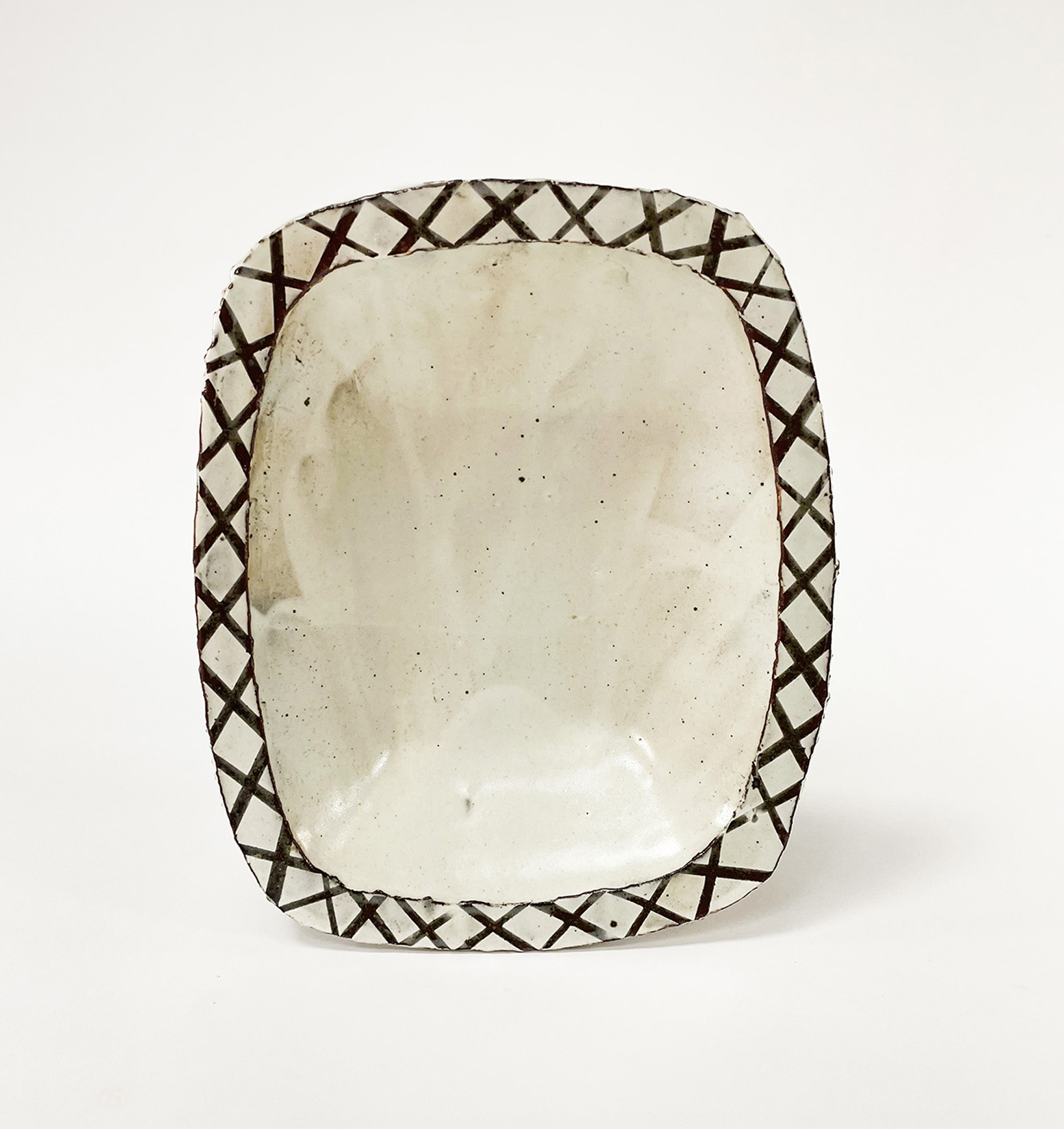
ROB: Coming back to where you were talking about the library – when you receive this video of your life and livelihood being totally demolished, and you're in this crowd of 100 other people in these varying states of emotional trauma – how did you cope with that type of trauma and realization?
GD: It's definitely a new feeling. I think in any field you work in, really, but working in the arts, we all deal with a lot of failure. When I was doing that residency, hopping right out of school, I was fortunate enough to get a couple to get a couple of gigs, but I also had probably close to twenty rejection letters. In my experience, I've dealt with a lot of being down on maybe your work or your situation, wishing you had more, or just being frustrated about where you're at in your career. And then I remember this is such an overwhelming feeling of sadness that none of that even mattered. All the years of being stressed about an upcoming firing or a craft show, It was all just bullshit. This moment was to experience real hardship for the first time. It was a sobering and humbling experience. It is a feeling of knowing none of that past experience matters at all, and we are just now figuring out how to emotionally cope with the fact that the River Arts is destroyed – where we work and hang out, teach, and just be ourselves.
I wish I could describe it.
I know how it feels. When I'm talking to you now I can feel the feeling of the early realization. I definitely cried every single day for probably a month, and then eventually, we all just ran out of tears.
It's hard to describe. It's the worst thing that's ever happened to me, but some really amazing things and friendships have come out of it.
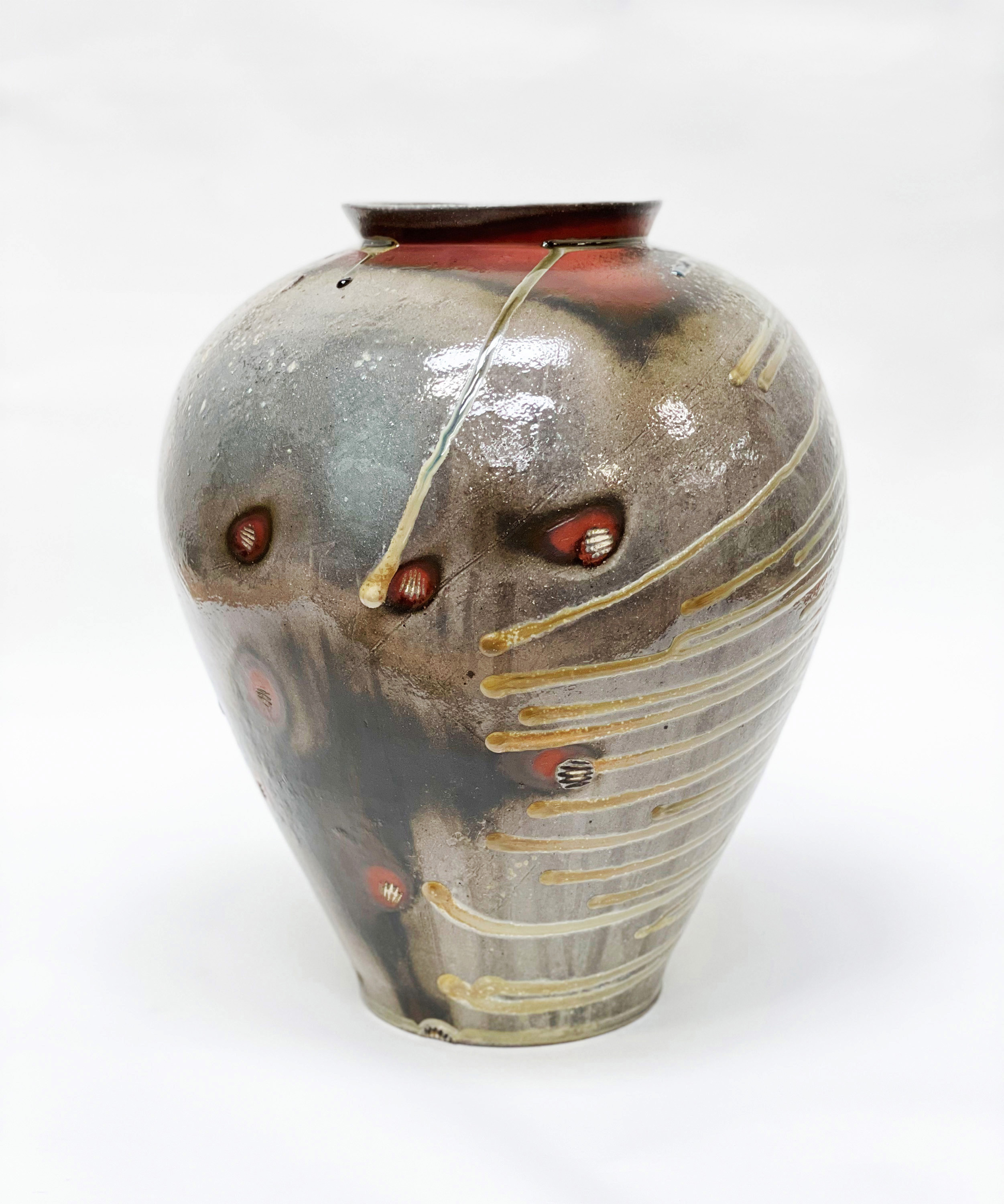 ROB: In that same vein, there's obviously pre-flood and thinking of how North Carolina influenced your approach to ceramics, especially given the state's rich history, but now you talk about this moment of shared trauma. Can you talk a little bit about how North Carolina influenced your work and how you think it might influence your work after the disaster?
ROB: In that same vein, there's obviously pre-flood and thinking of how North Carolina influenced your approach to ceramics, especially given the state's rich history, but now you talk about this moment of shared trauma. Can you talk a little bit about how North Carolina influenced your work and how you think it might influence your work after the disaster?
GD: What's unique to North Carolina and Appalachia is it’s the only area where the tradition of handcrafts was never broken. It wasn't like industrialization happened, then we went back to handcrafts. No, people continue to make woodworking and weaving and ceramics. The folk craft tradition is just so rich here. I've always been drawn to those early American salt glaze pots. They're just so brutally honest in their functionality and their simplicity. I think a jug is a good example. It's a beautiful swelling form. Some dirt-poor potter was worried about whether or not they had enough food in jars to survive the winter.
The form is completely unselfconscious. There, I'm a jug. You put liquid – preferably whiskey – inside of here, and that's what it's for. We don't need an artist statement; just get a cup if you want some, and if you don't, that's fine, too.
ROB: Can you talk a bit about a piece or a series that you've created that holds particular significance to you or that we can share with readers?
GD: The work I’m most excited about – being someone that makes pots – I make a lot of pots, so, cups and bowls and plates. I've always just been drawn to that production aspect, and certainly wouldn't consider myself a production potter, but I do just make a lot of really straightforward domestic wear.
The slide that I would spend more time on in a slide talk, is a lot of this work that I create out of slabs. So, larger decorative vessels that are all slab-built and reference vernacular architecture or adobe structures but also reference the natural landscape. I found hand building, particularly with slabs, felt like working with cheap metal or building a house, where it's more about planning. The work is actually just the final stage of the plan, but you've already executed every little part of the plan before it comes together.
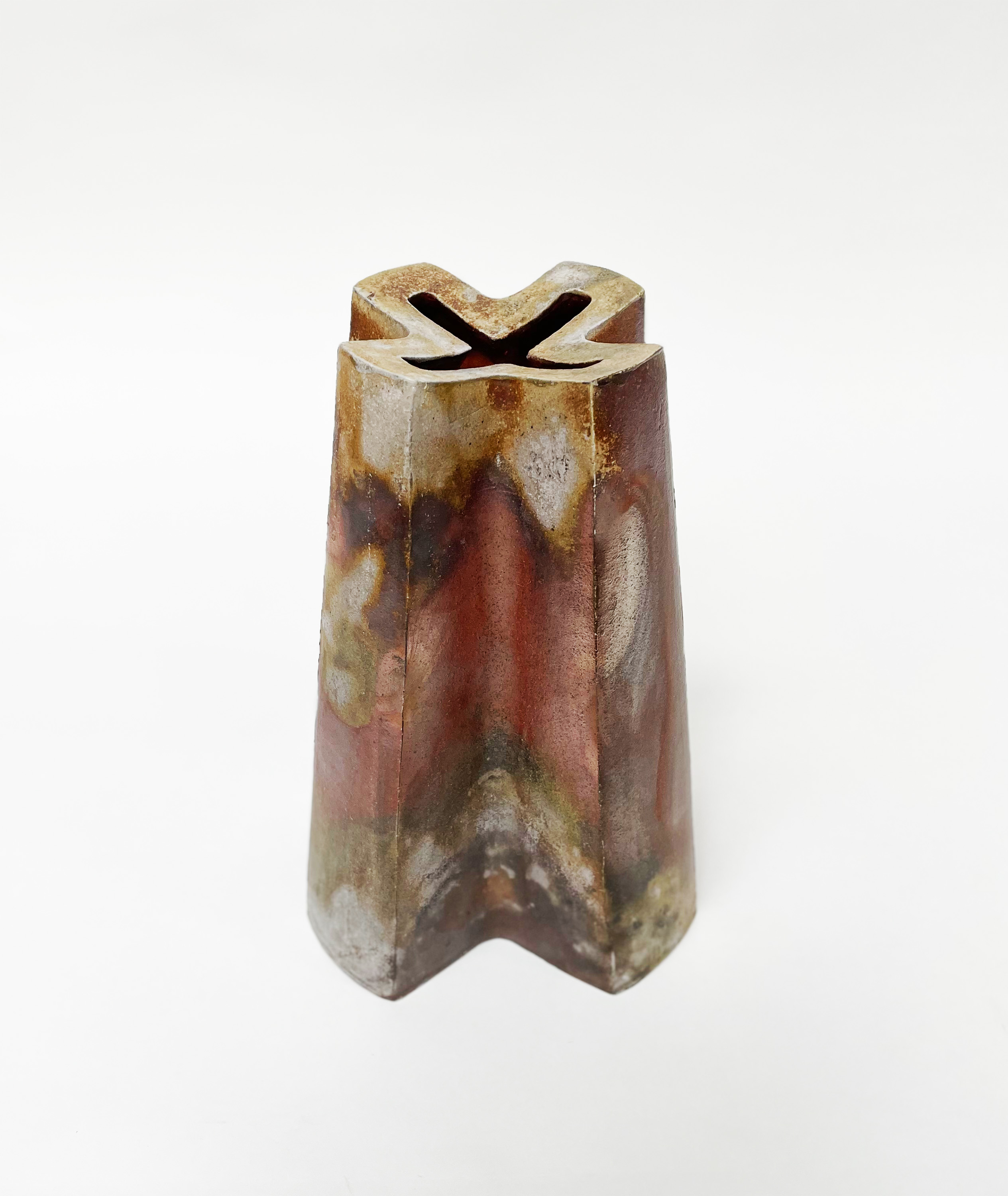
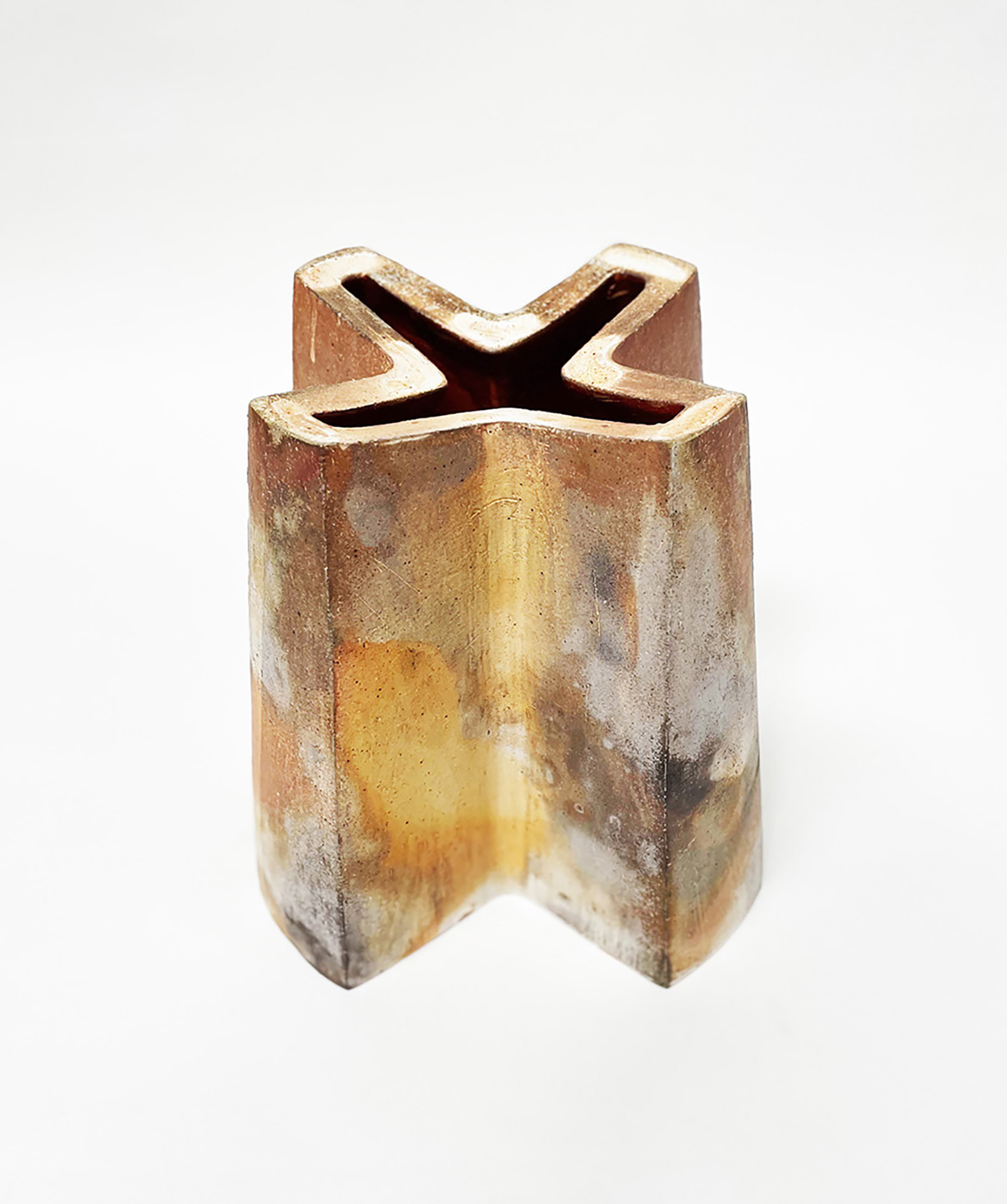
It’s slow and methodical – even just the slightest angle or plane change or plane can be so subtle – you and I and other folks in the world of craft might notice it, but it's profound and important to get that sense of a structure. It is art that is living in this vessel world, but I'm not really sure what it is.
Even in the worst state, when we do what we do specifically, you're always in your head, tinkering with an idea. My house is full of pots, and I'm always looking at pots and thinking about them. Even in the midst of the worst part of the storm if I'm at a friend's house, I’ll be going through their cabinets and flipping stuff over and looking at the foot.
I was talking to a friend of mine who doesn't work in the arts. I think they work in insurance, but they asked, “So, do you think you're still going to do clay?” It caught me off guard for a second; that's not even a question in my mind. He wasn't being rude or mean. He rationalized that this may be a time to switch careers. For me, never in a million; even in the moment of seeing the studio destroyed, at the public library on the sidewalk surrounded by all these strangers, there's still no doubt in my mind.
You can explore more of Gillan Doty’s work by visiting his Instagram page @gillandotypottery, and website https://www.gillandoty.com.

